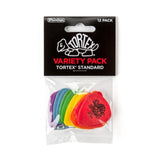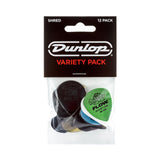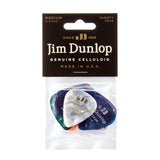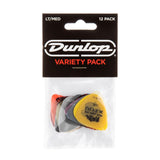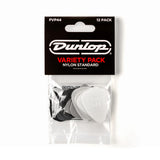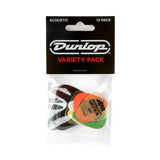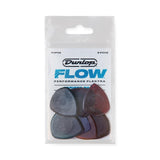Part 2 of our Guitar Wiring Guide sees us moving onto potentiometers, delving briefly into their effect upon your guitar tone before we move on to looking at wiring a simple circuit. As they’re more colloquially known, pots offer a powerful way to sculpt your sound, and there are many different ways they can be utilised in guitar circuits as they work to alter both volume and tone.
How a Potentiometer Works
Much in the same way a light switch dimmer works, a potentiometer allows you to progressively affect the way electrical current flows. The more you turn the volume pot, the more volume you get. Potentiometers are very simple devices, but incredibly powerful when used correctly. They are made up of several parts, lugs, the sweeper, and the resistive strip as you can see in the diagram below.

Linear vs Audio Taper
Pots come in two forms, linear and audio taper. Linear pots have a linear ratio, so when you turn the knob to 50% you get half of the signal. Audio Taper pots have a logarithmic ratio, which means they deliver signal in a progressive way to match the way the human ear perceives sound, which is in a non-linear fashion.
If you want to take a deeper dive into how pots work, then take a look at our Guitar Potentiometer Guide.
Pot Values
Each pot has a unique value depending on its construction, which will affect how it behaves in the guitar circuit. For the most part you’ll encounter either 250k or 500k pots, but there are other values such as 50k, 300k, and 1 Meg that can be useful in guitar wiring. The way pot values work is in the amount of signal they let go through to the ground. The more signal that goes through, the more treble goes through to the amp. So a 250k pot lets less treble signal through, resulting in a darker tone than a 500k pot.

Generally speaking this is why you will pair 250k pots with single coils and 500k with humbuckers. Single coils are naturally brighter in tone, so require less treble to be sent to the amplifier as this will give you a harsh sound. As humbuckers are warmer in tone, they need more of the highs to go to the amp for clarity.
Wiring a Volume Pot
There are three lugs on your volume pot that all do slightly different jobs, as per the image below, from left to right you have an input, an output, and a ground lug.

The input comes from your pickup’s ‘hot’ wire (usually via the pickup selector and the output goes to your output jack. The 'ground' connects up all components of the circuit before also terminating at the output jack, a subject we will cover in depth later in the series. To get a more general overview of this, lets have a look at a really simple circuit. If you were to wire up a simple one pickup, one volume circuit without a selector, then this is how you’d go about it.
One Pickup, One Volume
- First up you’ll need to get the ‘hot’ and ‘ground’ wires from your pickup. Typically with a single-coil, there will be two individual wires. The colours and shrouding of these may vary depending on the pickup manufacturer, and some single coils come with one thick wire that contains both. In most cases, the black wire is your ‘ground’ and the coloured wire is the ‘hot’. 'Hot' wires can be a variety of colours so if in doubt be sure to check with the manufacturer.

2. With a humbucker you’ll often have four wires so you’ll have to tie together the bare wire and the green one to form your ground, whilst the black wire will be your ‘hot’. For the purposes of this circuit red and white will also be tied together, as these are used for coil splitting with additional switches.
3. Next we solder the ‘hot’ from the pickup to lug 1 of the volume pot to create our input. The ‘ground’ from the pickup gets soldered to the back of the volume pot, and then we connect lug 3 to the back of the pot too.
4. To complete the circuit we’ll need to connect to our output jack. The output jack has two tabs to solder to, the ‘sleeve’ and the ‘tip’. The sleeve is the part in contact with the centre of the jack, the ‘tip’ is the bit that connects to the literal tip of the guitar cable. See the image below for a clearer view of that.
5. From your volume pot, you’ll need to solder a wire from lug 2 to the ‘tip’ tab of the output jack. Then, solder a wire from the ‘sleeve’ tab to the back of the volume control. To ensure that you don't become a 'ground' yourself when you touch the strings, you will also need to connect a ground wire the the bridge of your guitar to complete this circuit!
Et voila, we have a simple one pickup, one volume control wiring circuit! Here's a diagram for what your circuit should look like when you're done:
In Conclusion
As you’d expect with the wacky world of guitar, there are countless variations of guitar wiring circuits that can allow you to harness extra tonal versatility. Some pots will behave differently if you wire them the other way around and we could discuss endlessly what you can do with various combinations of capacitors and resistors when they are added into the circuit. We will look at a lot of more of this kind of thing later in the series, so stay tuned!
Learn More
Understanding the use of Resistors in Guitar Wiring will unlock a new depth and breadth of tones.
Our in depth article on Guitar Potentiometers will back up the knowledge gained in this article.
Have a look at our favourite Guitar Wiring Mods for some new project inspiration!













